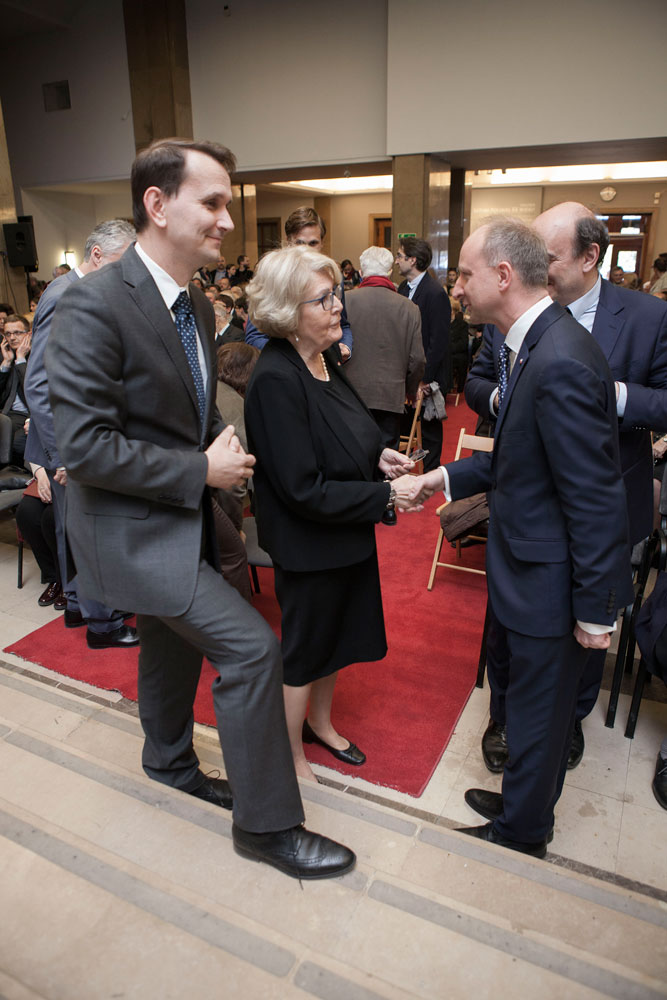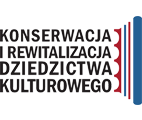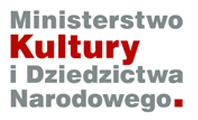Tuesday is the day of free entry to permanent exhibitions at the NMK.
The café and reading room in the Józef Czapski Pavilion are open Tuesday - Friday 10.00 - 18.00 Saturday - Sunday 10.00 - 19.00 Monday - closed.
The historic garden and lapidarium are open every day until dusk. Admission is free.
The museum is closed on Mondays.
the "SIX DAYS OF CREATION" exhibition will be closed until further notice
The café and reading room in the Józef Czapski Pavilion are open Tuesday - Friday 10.00 - 18.00 Saturday - Sunday 10.00 - 19.00 Monday - closed.
The historic garden and lapidarium are open every day until dusk. Admission is free.
The museum is closed on Mondays.
the "SIX DAYS OF CREATION" exhibition will be closed until further notice
The Emeryk Hutten-Czapski Museum constitutes the oldest and largest branch of the National Museum in Krakow. The neo-classical Czapski Palace, built in 1884 and designed by Antoni Siedek, functions as its main building and houses the world-renowned exhibition presenting the history of Polish coinage and medal art.
The history of this branch is inextricably linked with the person of Count Emeryk Hutten-Czapski (1828-1896), the greatest Polish collector-numismatist, bibliophile, collector of Polish prints, works of art and memorabilia. In the course of his lifetime's work, he amassed a collection of Polish coins, medals and banknotes regarded as the most valuable in history. After his death, a private museum was opened in a pavilion designed by Tadeusz Stryjeński and built as an extension to the palace. In 1903, by the decision of the collector's wife - Elżbieta Czapska neé Meyendorff (1833-1916) and her sons, it was donated to the National Museum through the Municipality of Krakow.
The Emeryk Hutten-Czapski Museum functioned with its permanent exhibition until 1939, after which it was closed to the public for over 70 years. Today, as a result of the implementation of the EU-funded project „European Centre for the Polish Numismatics”, we can once again admire the priceless treasures stored therein .
The numismatic collection, still expanding in the palace, now boasts over 100,000 objects, including 2,500 most valuable items which can be admired on display occupying almost the entire building. The beautiful, renovated rooms of the palace and unique interiors of the museum pavilion will delight the visitors with numerous unique or even legendary coins and the most beautiful medals, along with the rarest old prints and maps.
The motto of this outstanding collection and its importance for the Polish culture and history is reflected in the inscription placed on the pediment of the pavilion: Monumentis Patriae naufragio ereptis (For the National Memorabilia Saved from Destruction).
The back of the Palace overlooks a beautiful garden, which has kept its 19th-century character. Here, in the shade of over a hundred-year-old trees, one can admire a section of the lapidary collection, which contains fragments of Krakow Gothic buildings (eg. the original 14th-century pinnacle of St. Mary's Church).
The Museum serves as a centre dedicated to numismatics, carrying out both exhibition and research projects, workshops, conferences, displays and educational activities for children and adults of all levels.
The adjacent building (at no. 14 Józefa Piłsudskiego Street), donated to the National Museum in 1967 by the family of Władysław Łoziński - a Professor of the Jagiellonian University, and its annexe expanded in 2013 presently house: the Department of Old Prints and Manuscripts, the Department of Old Photographs, the Archives of the National Museum in Krakow, the Paper and Leather Conservation Studio, the Bookbinding Workshop and the Laboratory for Analysis and Non-Destructive Research into Artefacts (LANBOZ).
Text by Mateusz Woźniak, National Museum in Krakow
Józef Czapski’s pavilion is the newest and smallest building, forming part of the Emeryk Hutten-Czapski Museum complex, department of the National Museum in Cracow. Built in the back of the former garden adjacent to the Łoziński tenement, the pavilion is dedicated to the grandson of the creator of the most valuable numismatic collection in Poland, the eminent Polish intellectual, writer, painter and critic.
The idea of building the pavilion is associated with Józef Czapski’s testament, executed in 1994, in which he posthumously gave his archives, including the invaluable diaries, personal mementos and books, as well as documents of his sister Maria Czapska (1894-1981) and other Czapski family members, to the National Museum in Krakow.
The most important part of Jozef Czapski’s Pavilion is a permanent exhibition relating his life and work, prepared by Krystyna Zachwatowicz. One may trace back not only the biography of the artist, but almost all Polish and, to a lesser extent, European history in the twentieth century, whose participant, and later a witness was Czapski. Selected texts of his works provide commentary for the events in which he participated. The exhibition combines a traditional display where authentic objects are crucial, and in case of writers and painters - their works, with the use of modern multimedia equipment that allows, among others, to get acquainted with archival materials.
On the first floor there is a room for temporary exhibitions, which will be inaugurated with a presentation of a choice of Józef Czapski’s extraordinary diaries and paintings from the collection of Richard Aeschlimann, his longtime friend and Swiss art dealer who, with his wife Barbara, donated them to the National Museum in Cracow on the occasion of the opening of the pavilion. These twelve paintings are complemented by the works on loan from the Palace Museum in Kurozwęki and from private individuals. On the same floor there is a small room for film screenings and educational purposes.
On the ground floor there is a reading room with a reference library containing books thematically related with the artist and multimedia stands where one may get familiar with the digitalized archives, as well as a French-style decorated cafe where lectures on painting, Polish literature in the country - and abroad after world war II - and meetings devoted to outstanding figures of Polish literature and politics will be organized.
Open to the public is also a terrace, which offers an extraordinary view of the entire Emeryk Hutten-Czapski Museum and the inside-quarter gardens of neighboring houses.
Support for the construction of the Pavilion provided by the Norwegian funds and funds of the EEA from Iceland, Liechtenstein and Norway, as well as national resources.
The history of this branch is inextricably linked with the person of Count Emeryk Hutten-Czapski (1828-1896), the greatest Polish collector-numismatist, bibliophile, collector of Polish prints, works of art and memorabilia. In the course of his lifetime's work, he amassed a collection of Polish coins, medals and banknotes regarded as the most valuable in history. After his death, a private museum was opened in a pavilion designed by Tadeusz Stryjeński and built as an extension to the palace. In 1903, by the decision of the collector's wife - Elżbieta Czapska neé Meyendorff (1833-1916) and her sons, it was donated to the National Museum through the Municipality of Krakow.
The Emeryk Hutten-Czapski Museum functioned with its permanent exhibition until 1939, after which it was closed to the public for over 70 years. Today, as a result of the implementation of the EU-funded project „European Centre for the Polish Numismatics”, we can once again admire the priceless treasures stored therein .
The numismatic collection, still expanding in the palace, now boasts over 100,000 objects, including 2,500 most valuable items which can be admired on display occupying almost the entire building. The beautiful, renovated rooms of the palace and unique interiors of the museum pavilion will delight the visitors with numerous unique or even legendary coins and the most beautiful medals, along with the rarest old prints and maps.
The motto of this outstanding collection and its importance for the Polish culture and history is reflected in the inscription placed on the pediment of the pavilion: Monumentis Patriae naufragio ereptis (For the National Memorabilia Saved from Destruction).
The back of the Palace overlooks a beautiful garden, which has kept its 19th-century character. Here, in the shade of over a hundred-year-old trees, one can admire a section of the lapidary collection, which contains fragments of Krakow Gothic buildings (eg. the original 14th-century pinnacle of St. Mary's Church).
The Museum serves as a centre dedicated to numismatics, carrying out both exhibition and research projects, workshops, conferences, displays and educational activities for children and adults of all levels.
The adjacent building (at no. 14 Józefa Piłsudskiego Street), donated to the National Museum in 1967 by the family of Władysław Łoziński - a Professor of the Jagiellonian University, and its annexe expanded in 2013 presently house: the Department of Old Prints and Manuscripts, the Department of Old Photographs, the Archives of the National Museum in Krakow, the Paper and Leather Conservation Studio, the Bookbinding Workshop and the Laboratory for Analysis and Non-Destructive Research into Artefacts (LANBOZ).
Text by Mateusz Woźniak, National Museum in Krakow
Józef Czapski’s pavilion is the newest and smallest building, forming part of the Emeryk Hutten-Czapski Museum complex, department of the National Museum in Cracow. Built in the back of the former garden adjacent to the Łoziński tenement, the pavilion is dedicated to the grandson of the creator of the most valuable numismatic collection in Poland, the eminent Polish intellectual, writer, painter and critic.
The idea of building the pavilion is associated with Józef Czapski’s testament, executed in 1994, in which he posthumously gave his archives, including the invaluable diaries, personal mementos and books, as well as documents of his sister Maria Czapska (1894-1981) and other Czapski family members, to the National Museum in Krakow.
The most important part of Jozef Czapski’s Pavilion is a permanent exhibition relating his life and work, prepared by Krystyna Zachwatowicz. One may trace back not only the biography of the artist, but almost all Polish and, to a lesser extent, European history in the twentieth century, whose participant, and later a witness was Czapski. Selected texts of his works provide commentary for the events in which he participated. The exhibition combines a traditional display where authentic objects are crucial, and in case of writers and painters - their works, with the use of modern multimedia equipment that allows, among others, to get acquainted with archival materials.
On the first floor there is a room for temporary exhibitions, which will be inaugurated with a presentation of a choice of Józef Czapski’s extraordinary diaries and paintings from the collection of Richard Aeschlimann, his longtime friend and Swiss art dealer who, with his wife Barbara, donated them to the National Museum in Cracow on the occasion of the opening of the pavilion. These twelve paintings are complemented by the works on loan from the Palace Museum in Kurozwęki and from private individuals. On the same floor there is a small room for film screenings and educational purposes.
On the ground floor there is a reading room with a reference library containing books thematically related with the artist and multimedia stands where one may get familiar with the digitalized archives, as well as a French-style decorated cafe where lectures on painting, Polish literature in the country - and abroad after world war II - and meetings devoted to outstanding figures of Polish literature and politics will be organized.
Open to the public is also a terrace, which offers an extraordinary view of the entire Emeryk Hutten-Czapski Museum and the inside-quarter gardens of neighboring houses.
Support for the construction of the Pavilion provided by the Norwegian funds and funds of the EEA from Iceland, Liechtenstein and Norway, as well as national resources.





